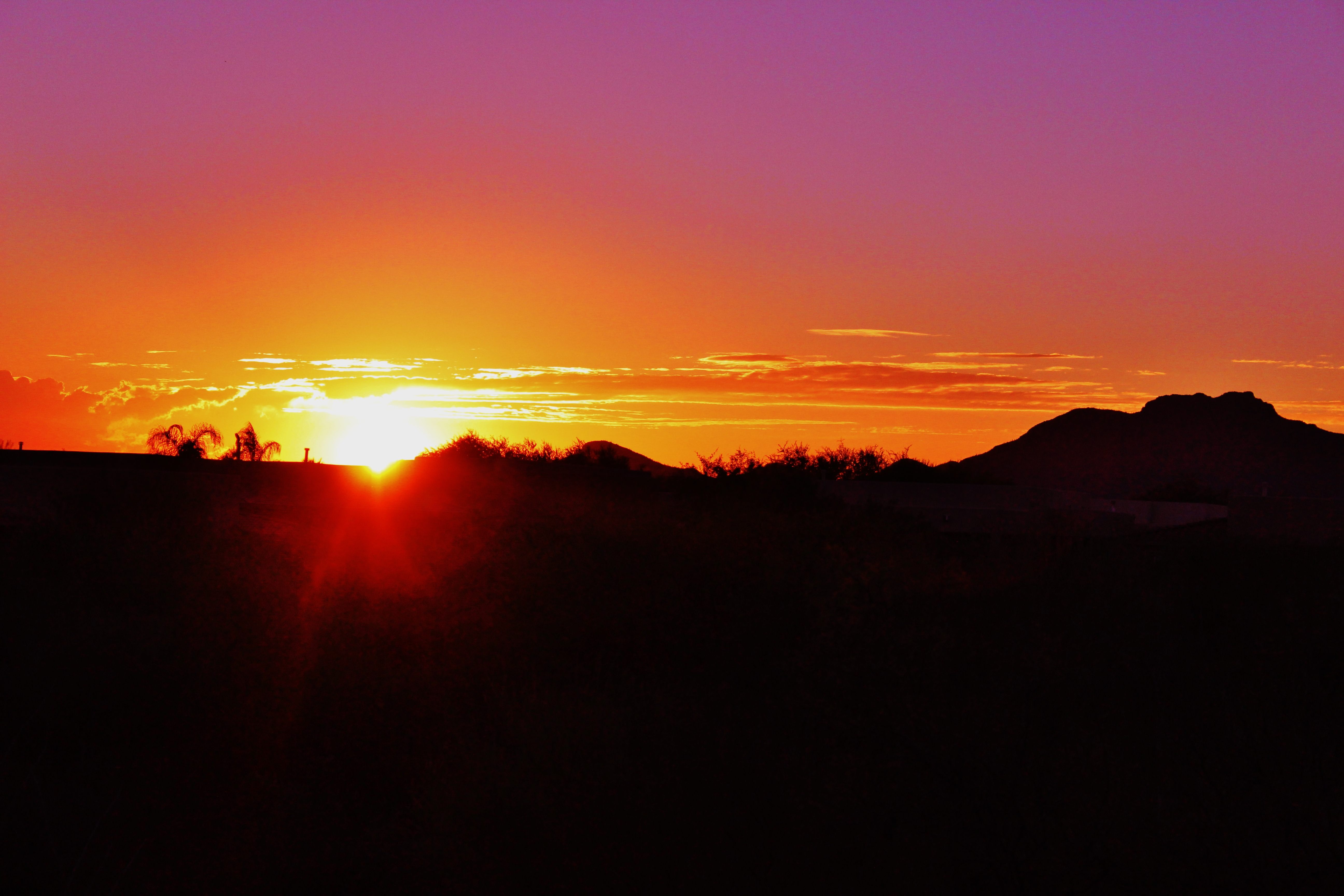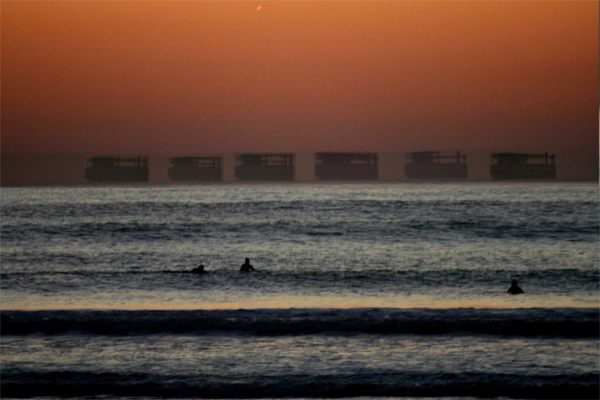Why Desert Sunsets Are Incredibly Colorful
Turns out, dry, clean air is the secret to a vivid landscape.

There’s that small window of time, every day before night falls, when the sun hangs in the balance between daylight and darkness. In astronomical terms, sunsets are the daily disappearance of the sun’s upper limb below the horizon. And though their warm beauty is expected, not all sunsets are created equal. In deserts, sunsets are decidedly more colorful.
While it may not visibly appear that way, sunlight is actually made up of the full spectrum of colors. “The atmosphere acts as a filter for incoming sunlight, just like a filter you would put on a camera to filter out certain colors,” says Stephen F. Corfidi, Research Associate at the NOAA/NWS Storm Prediction Center. “The longer the pathway through the atmosphere, the more that filtering effect becomes noticeable to humans.” Each color represented in the rainbow has its own unique wavelength. Colors with longer wavelengths, such as oranges and reds, are more visible, while purples and blues (which have shorter wavelengths) get left out.
When we are in cities plagued by pollution, the boundary layer of air that separates land from sky is cluttered with little particles. “You’re seeing the sunset through a screen of particles and pollution [in a city]… so it doesn’t seem that stunning,” Corfidi says. In a more pristine environment such as a desert, the boundary layer is less interrupted by these particles, so the vividness of a sunset is more apparent.


Part of the reason desert air can be cleaner is simply because fewer people live there. And thanks to wind coming off the Pacific Ocean being relatively uncompromised by particles, the air that sweeps up dust in the deserts of the Southwestern U.S. in particular tends to make for better sunsets. “The air in the Pacific, on average, tends to be cleaner,” says Corfidi. “So the recent history of air that arrived in Arizona is going to have fewer particles, all things considered, than, say, some point along the East Coast.”
In case you can’t already tell, there’s a lot going on in the atmosphere during that penultimate moment before twilight. According to Corfidi, the “hygroscopic aspect” of these particles (which means that they grab onto moisture molecules floating in the air) causes the particles to grow because there’s moisture added to them. “When they grow they become large enough such that they’re no longer acting as selective filters for the light, and they basically become like tiny little objects… but when sunlight hits them, the sunlight isn’t being filtered anymore,” he says.
In environments with more water vapor in the air, this results in sunsets that are more watered down, or pastel-colored. But in the desert, drier air means more vivid color wavelengths are able to shine through. “You have less of a swelling of these ambient particles that are always floating around out there,” says Corfidi. “They stay smaller and therefore they don’t tend to mute the filtering effect that results in a beautiful sunset.”
All of this filtering happens in the mid- and upper-levels of the atmosphere, and changes our perception of incoming sunlight so that we see brilliant oranges and reds. While particle-heavy air diminishes the vividness of non-desert sunsets, the desert environment’s unencumbered skies create sunsets with greater spectral purity in contrast. “The scattering effect of those very thinly dispersed air molecules leave a very spectrally pure orange color,” says Corfidi. “That orange that you might see in a patch of cloud is as orange as a Crayola crayon.” Of course, if we were to put an official spectrometer up to a sunset, it would probably show that the “spectrally pure orange” is really a mix of reds and greens, too. But sunsets are inherently subjective and perceptive, so what we see matters as much as what we don’t.










Follow us on Twitter to get the latest on the world's hidden wonders.
Like us on Facebook to get the latest on the world's hidden wonders.
Follow us on Twitter Like us on Facebook